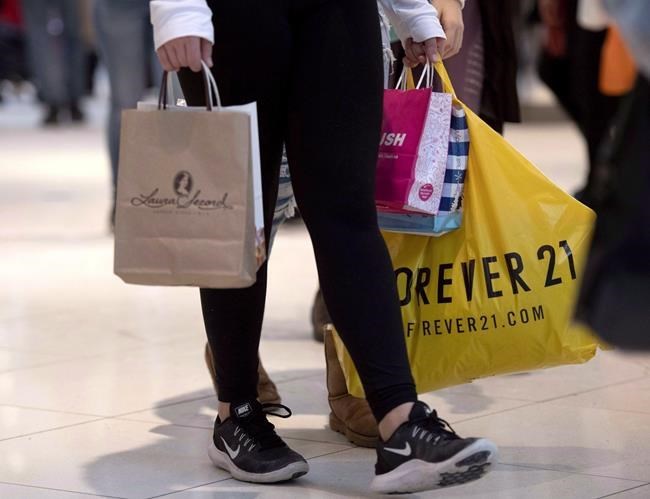OTTAWA — Retail sales edged higher in July, driven by sales at supermarkets and grocery stores, but Statistics Canada said Friday its early estimate for August pointed to a decline.
The agency said retail sales jumped 0.3 per cent to $66.1 billion in July as sales at food and beverage retailers surged 1.3 per cent for the month.
CIBC senior economist Katherine Judge said the increased spending at grocery stores could be a sign that households opted to dine out less, as higher interest rates and prices weighed.
"That casts doubt on the notion of services consumption providing an offset to weak goods consumption at the start of the third quarter," she added.
Statistics Canada said its early estimate for August suggested retail sales dropped 0.3 per cent for that month, though it cautioned the figure would be revised.
Judge said the advanced August reading could have been impacted by wildfires.
"But even when allowing for a rebound in September, real retail sales look to be down 2.5-3.5 per cent annualized in the third quarter, the second consecutive quarter of weakness that suggests consumer spending will be soft in the GDP numbers for the third quarter."
Judge said while the Bank of Canada will have to assess how much of the drop in retail was due to port strikes and wildfires, it's in line with her view that the economy is soft enough for the central bank to keep rates on hold.
In July, nominal sales were up in seven out of nine subsectors, with spending more broad-based than the previous month.
Core retail sales — which exclude gasoline stations and fuel vendors, and motor vehicle and parts dealers — gained 1.3 per cent in July.
The increase in core sales came as food and beverage retailers gained 1.3 per cent, lifted higher by a 1.5 per cent increase at supermarkets and other grocery retailers, except convenience stores, and a 1.3 per cent gain at beer, wine and liquor retailers.
Sales at general merchandise retailers rose 1.8 per cent.
The largest decrease was seen in sales at motor vehicle and parts dealers which lost 1.6 per cent — the first decline in four months. Sales at new car dealers dropped 1.7 per cent and used car dealers lost 3.1 per cent. Automotive parts, accessories and tire retailers gained 1.0 per cent.
Judge said the move follows a string of strong gains for auto dealers, as the supply chains normalized, allowing the industry to catch up with the pent-up demand.
Gasoline stations and fuel vendors also shed 0.7 per cent. In volume terms, the sales at gasoline stations and fuel vendors fell 1.0 per cent.
In volume terms, overall retail sales were down by 0.2 per cent for the month.
Overall, Judge said, the retail report stood as a signpost that consumer strength continued to wane in the third quarter.
"We expect the unemployment rate to rise further ahead, and combined with the impact of mortgage renewals at higher interest rates, that will add pressure to consumption, likely leaving the Bank of Canada on hold for the rest of this year."
This report by The Canadian Press was first published Sept. 22, 2023.
The Canadian Press



